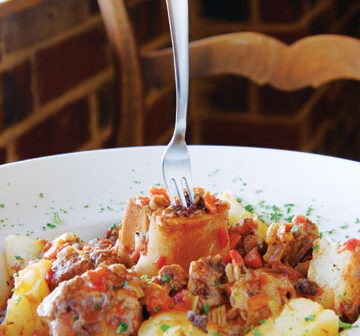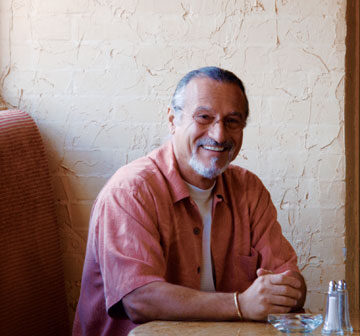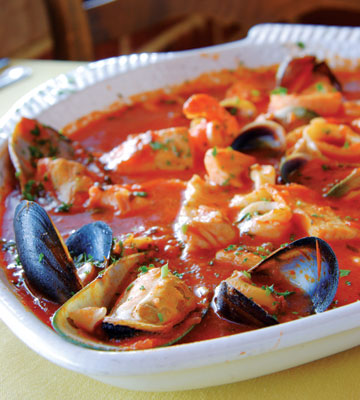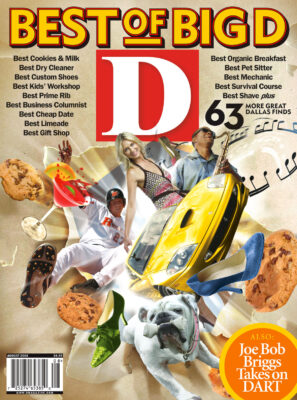Luciano Cola is an Italian who runs two Italian restaurants in Dallas. For 30 years he charmed his guests—women always got a kiss on the hand—at Trattoria Lombardi, a spot he and fellow Italian Alberto Lombardi started back in the red-and-white-checkered-tablecloth, candle-melting-in-a-Chianti-bottle Italian food days.
But Cola, Lombardi, and even the great Mario (Il Sorrento) Messina are in the minority. Italians, in fact, are something of a rarity in Dallas Italian dining. The odd truth (confirmed by a 1999 Wall Street Journal article): Albanian immigrants run the majority of Italian restaurants in Dallas.
“Or Iranians, French, Chinese, or Pakistanis,” says Cola, with just a hint of wounded pride in his voice. “I’m just saying that there are two kinds of Italians in Dallas: those who are and those who wish they were.”
So it’s no wonder that Dallas’ palate for Italian food has, over the years, been molded by mediocrity and ruled by red sauce. Recently new restaurants backed by Italian blood have emerged—Daniele Osteria and Bice, for example—but the “neighborhood” Italian spots are, well, spotty when it comes to authenticity.
“You know people in Dallas. You can’t fool them,” says Cola, who recently closed Trattoria Lombardi after his lease expired and reopened it as La Paesana, in the old Hofstetter’s Spargel Cafe space on Lovers Lane. “People here know Italy.”
Do they? Even Cola admits it took Dallas some time to warm to “authentic” Italian. “For a long time Mario Messina had a tough time selling anything but manicotti, lasagna, and veal,” Cola says. “Sometimes you just have to give people what they want.”
At La Paesana, Cola succeeds at giving his regular customers what they want, which is what they are used to, but he also pushes a few authentic Italian tastes to the more sophisticated palate. He has thrown out the checkered tablecloths and moved some of the furniture to the new space. The interior has a Tuscan countryside vibe, and the old straw-backed chairs, paintings, and antiques look better against the newly bricked walls. A separate bar area features a television for those who have to watch the game, but the main dining room is low-tech.

The staff is a mixture of old and new. Some have been in the kitchen for 30 years, while several waiters are approaching the 20-year mark. Unfortunately, on one visit our server was an eager-to-please rookie. When we asked the origin of the mozzarella and the sausage, she informed us they were made in-house. Later, Cola clarified: he buys the oil, cheese, salami, and other products from New York. The Italian sausage comes from Kuby’s. But the pasta is made on-site.
My only complaint about the sausage dish with onion, pepper, and mushrooms tossed in—drum roll, please—tomato sauce was that the sausage was sliced too thin to savor the flavor. Flavor, or lack of, was also a problem with the bland veal scaloppine. Flattened meat was smothered in a thin, watery mushroom sauce. However, I found no fault in the cioppino della Paesana, a hefty bowl of fish and shellfish simmering in a—you guessed it—spicy tomato sauce. All the seafood dishes we tried, especially the crab cannelloni topped with a rich lobster sauce, were above-average in taste and below-average in price. Most entrées hovered around $18.

Cola is also a veteran pizza and calzone producer, and his current versions at La Paesana beat the pepperonis off of Gordo’s across the street. (He serves the same at Antonio’s, his restaurant in Addison, run by son Marco.) His secret? No water in the dough; he gets an extra boost of yeast and moisture by using Budweiser. The result is a real crowd pleaser: thin, crisp crust topped with prosciutto, capers, artichoke hearts, red onions, tomatoes, mozzarella, and oregano is even better the next morning for breakfast.
But my favorite dish at La Paesana was the petto di pollo in casseruola, which is just a really fancy Italian way of saying breast of chicken baked with mushrooms, sweet peppers, black olives, and penne pasta, all tossed in a tomato and white wine sauce. It might not be what a lot of foodies consider authentic Italian cuisine, but, hey, I’m an old Dallas girl who is a sucker for a guy who kisses her hand before dinner and makes a mean marinara.
Update: La Paesana has closed.






